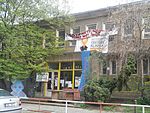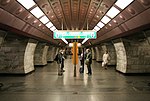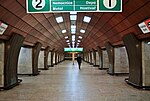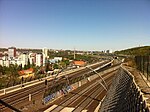Czech and Slovak Federative Republic
1990 establishments in Czechoslovakia1992 disestablishments in CzechoslovakiaCzechoslovakiaFormer Slavic countriesFormer countries of the Cold War ... and 2 more
Government of CzechoslovakiaStates and territories established in 1990

After the Velvet Revolution in late-1989, Czechoslovakia adopted the official name Czech and Slovak Federative Republic (Czech: Česká a Slovenská Federativní Republika, Slovak: Česká a Slovenská Federatívna Republika; ČSFR) during the period from 23 April 1990 until 31 December 1992, after which the country was dissolved into the Czech Republic and the Slovak Republic.
Excerpt from the Wikipedia article Czech and Slovak Federative Republic (License: CC BY-SA 3.0, Authors, Images).Czech and Slovak Federative Republic
Olšanská, Prague Žižkov
Geographical coordinates (GPS) Address Nearby Places Show on map
Geographical coordinates (GPS)
| Latitude | Longitude |
|---|---|
| N 50.083333333333 ° | E 14.466666666667 ° |
Address
Residence Garden Towers
Olšanská
130 00 Prague, Žižkov
Prague, Czechia
Open on Google Maps










